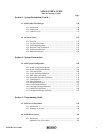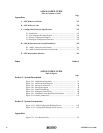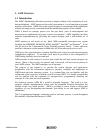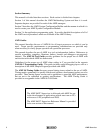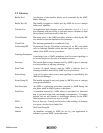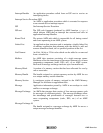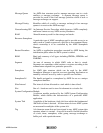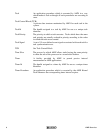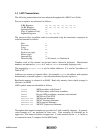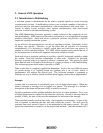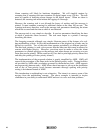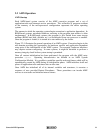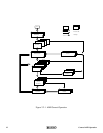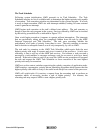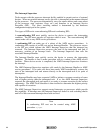
AMX Overview
K
A
DAK
7
1.3 AMX Nomenclature
The following nomenclature has been adopted throughout the AMX User's Guide.
Processor registers are referenced as follows:
8-Bit Registers AH, AL, BH, BL, CH, CL, DH, DL
16-Bit Registers AX, BX, CX, DX, SP, BP, SI, DI
Instruction Pointer IP
Flags (Condition Code) CC
Segment Registers CS, DS, SS, ES
The processor flags (condition code) are referenced using the mnemonics employed in
software branches as follows:
Zero Z
Non-zero NZ
Carry C
No Carry NC
Positive (no sign) NS
Minus (sign) S
Interrupt flag IF
Direction flag UP if forward; DN if backward
Numbers used in this manual are decimal unless otherwise indicated. Hexadecimal
numbers are indicated as 0xABCD in C code or 0ABCDH in assembly language code.
The terminology A(Table XYZ) is used to define addresses. It is read as "the address of
Table XYZ".
Addresses are written as segment:offset. For example ES:BX is the address with segment
determined by extended register ES and offset determined by base register BX.
Read/write memory is referred to as RAM. Read only memory (non-volatile storage) is
referred to as ROM.
AMX symbol names are identified as follows:
ajxxxx AMX procedure called from C
AAXXXX AMX procedure called from assembler
AMXXXX Private AMX procedures, structures and constants
AERXXX AMX Error Code XXX
AA831xxx.xxx AMX kernel filenames
AJ831xxx.xxx AMX C Interface filenames
AMxxxxxx.xxx AMX reserved filenames
AA832xxx.xxx AMX PC Supervisor filenames
Throughout this manual examples are provided in C and assembly language. In general,
code examples in C are presented in lower case. Code examples in assembler are in
upper case. File names are shown in upper case. C code assumes that an int is 16 bits as
is common for most C compilers for the 8086 family.



